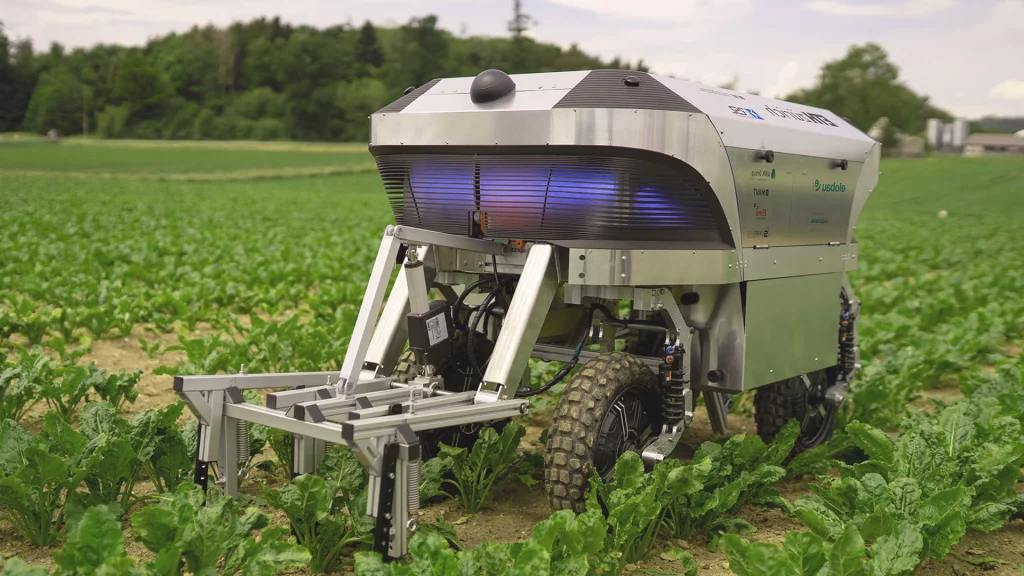
The cannabis industry is experiencing rapid advancements, with artificial intelligence (AI) and robotic technology at the forefront of this transformation. These innovations are reshaping cannabis cultivation by automating plant maintenance, enhancing crop quality, and reducing operational costs. This article explores how AI and robotics are revolutionizing the industry and providing a competitive edge for cultivators, particularly in Canada.
How AI and Robotics are Transforming Cannabis Cultivation
- Automated Plant Care
Robotic systems are now capable of performing essential plant maintenance tasks autonomously. This includes precise watering, nutrient delivery, and pH balancing. Advanced sensors enable these robots to monitor plant health continuously and adjust environmental conditions such as light, humidity, and temperature. By automating these processes, cultivators can ensure optimal growing conditions and reduce the need for manual labor. - Precision Farming
AI-driven data analytics allows for precision farming, where every aspect of plant care is tailored to individual plants. AI systems analyze growth patterns and predict future needs, ensuring that plants receive the exact care required. This level of precision not only maximizes crop yield but also improves the overall quality of the cannabis, as plants are harvested at their peak potency. - Enhanced Crop Monitoring
Drones and robots equipped with high-resolution cameras and sensors provide comprehensive monitoring of cannabis crops. These technologies can detect early signs of pests, diseases, or nutrient deficiencies, enabling prompt intervention. By identifying and addressing issues early, AI and robotic systems help maintain plant health and prevent potential crop losses. - Streamlined Harvesting
The harvesting process has also seen significant improvements thanks to robotics. Automated harvesters can efficiently cut, trim, and sort cannabis plants, reducing the need for manual labor. This not only speeds up the harvesting process but also minimizes human error, resulting in a more consistent and high-quality product.
Cost Reduction and Competitive Pricing
AI and robotics are not only enhancing the quality and efficiency of cannabis cultivation but also significantly reducing costs:
- Labor Savings
By automating labor-intensive tasks, robotic systems help reduce the overall labor costs associated with cannabis cultivation. Tasks that previously required a team of workers can now be performed by robots, which work around the clock without breaks. This reduction in labor expenses allows cultivators to allocate resources more efficiently and lower production costs. - Operational Efficiency
The integration of AI and robotics improves operational efficiency by optimizing resource use. For example, automated irrigation systems ensure that plants receive the exact amount of water and nutrients needed, reducing waste. Additionally, AI systems can forecast and manage environmental conditions, minimizing energy consumption and other operational costs. - Consistency and Quality Control
AI-driven precision and robotic systems enhance consistency in product quality. This reliability is crucial in a regulated market where product standards are closely monitored. Consistent quality translates to fewer product rejections and less waste, further contributing to cost savings. - Scalability and Expansion
The ability to scale operations efficiently is another advantage of AI and robotics. Automated systems can be integrated into both new and existing facilities with relative ease, facilitating rapid expansion. This scalability helps cultivators meet growing demand without significantly increasing costs, giving them a competitive edge in the market.
Competitive Edge for Canadian Cultivators
The adoption of AI and robotics provides Canadian cultivators with a significant advantage, especially in comparison to growers in countries where cannabis remains unregulated:
- Cost Efficiency
Reduced labor and operational costs enable Canadian cultivators to offer competitive pricing. This is crucial in a global market where pricing can influence consumer choice. By leveraging technology to lower production costs, Canadian growers can remain competitive and attract more customers. - Regulatory Compliance
In Canada’s tightly regulated cannabis industry, technology helps ensure compliance with strict standards. Automated systems maintain precise control over cultivation processes, making it easier to adhere to regulatory requirements and pass inspections. - Quality and Consistency
The ability to consistently produce high-quality cannabis is a key factor in building a strong market presence. AI and robotics contribute to maintaining product quality and reliability, helping Canadian cultivators build a reputation for excellence.
According to an article published by Neil Sahota in Forbes, “AI-powered systems are dramatically improving crop management by providing precise control over irrigation, fertilization, and pest control.” This quote highlights how such advancements are not only enhancing the efficiency of cannabis cultivation but also ensuring that cultivators can meet the high standards demanded by consumers and regulators alike.
Conclusion
The integration of AI and robotic technologies in cannabis cultivation is transforming the industry by enhancing efficiency, quality, and cost-effectiveness. Automated systems streamline plant care, improve monitoring, and optimize harvesting processes. These advancements provide Canadian cultivators with a competitive edge by reducing costs, ensuring regulatory compliance, and delivering consistent, high-quality products. As technology advances, it will undoubtedly further shape the future of cannabis cultivation, offering new opportunities and driving growth in the industry.

